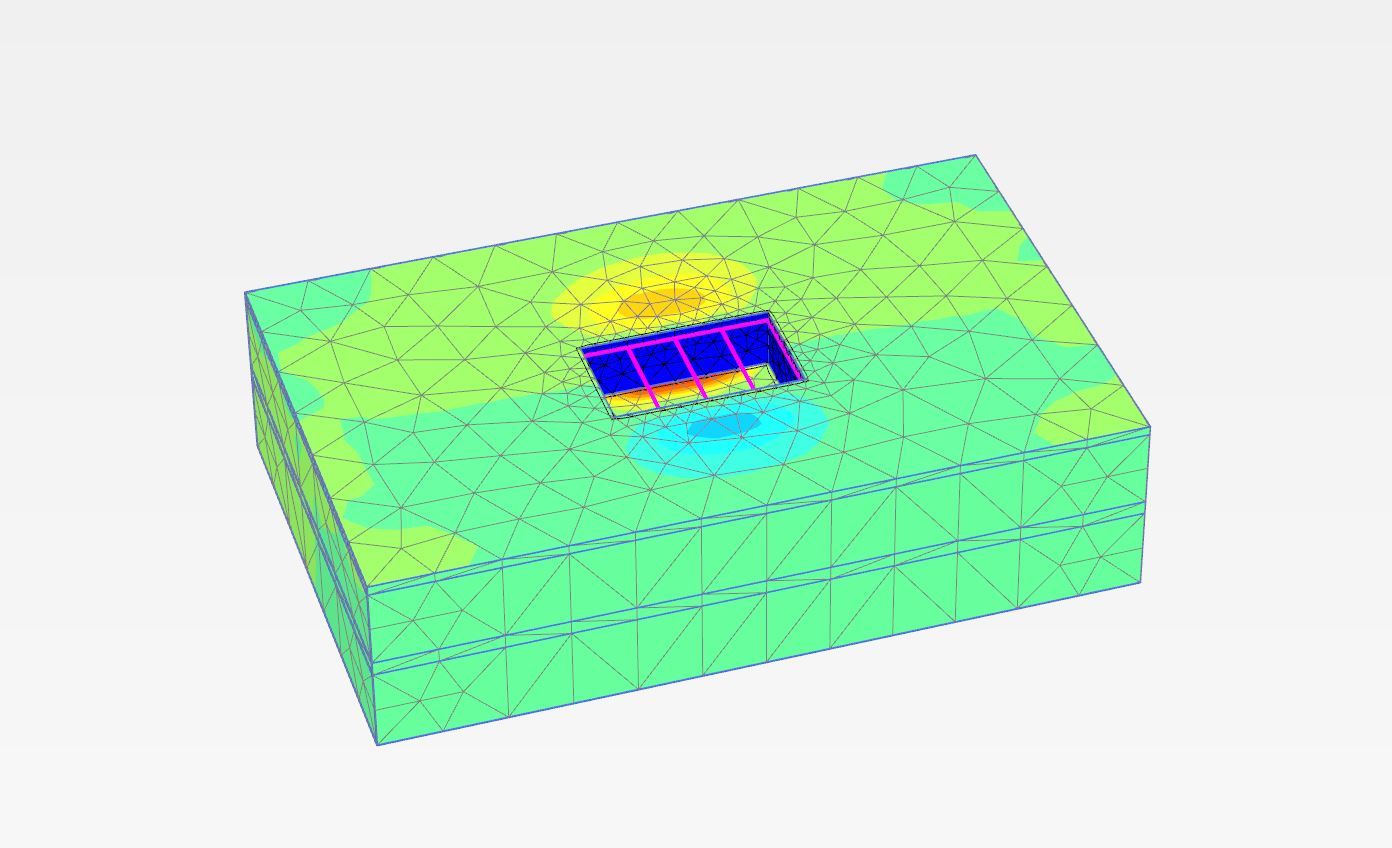Three-dimensional numerical analysis – Plaxis 3D
It seems almost unimaginable today to conduct a problem analysis and structure calculation in geotechnical engineering without the use of numerical modeling. The use of advanced numerical methods, such as the finite element method, allows us to carry out complex analyses that help us describe soil behavior and structure, as well as their interaction. Because we encounter many complex geotechnical problems in our daily work, we have decided to put the new Plaxis 3D software package with three-dimensional numerical analysis features into action.
Using Plaxis 3D
Plaxis 3D is a software package based on the finite element method and used to perform three-dimensional stress-strain analysis, stability analysis and flow analysis. Compared to software based on two-dimensional numerical analysis, Plaxis 3D enables modeling with actual location conditions and transferring the problem geometry, as well as geological conditions from 3D terrain models created in CAD or BIM interface.
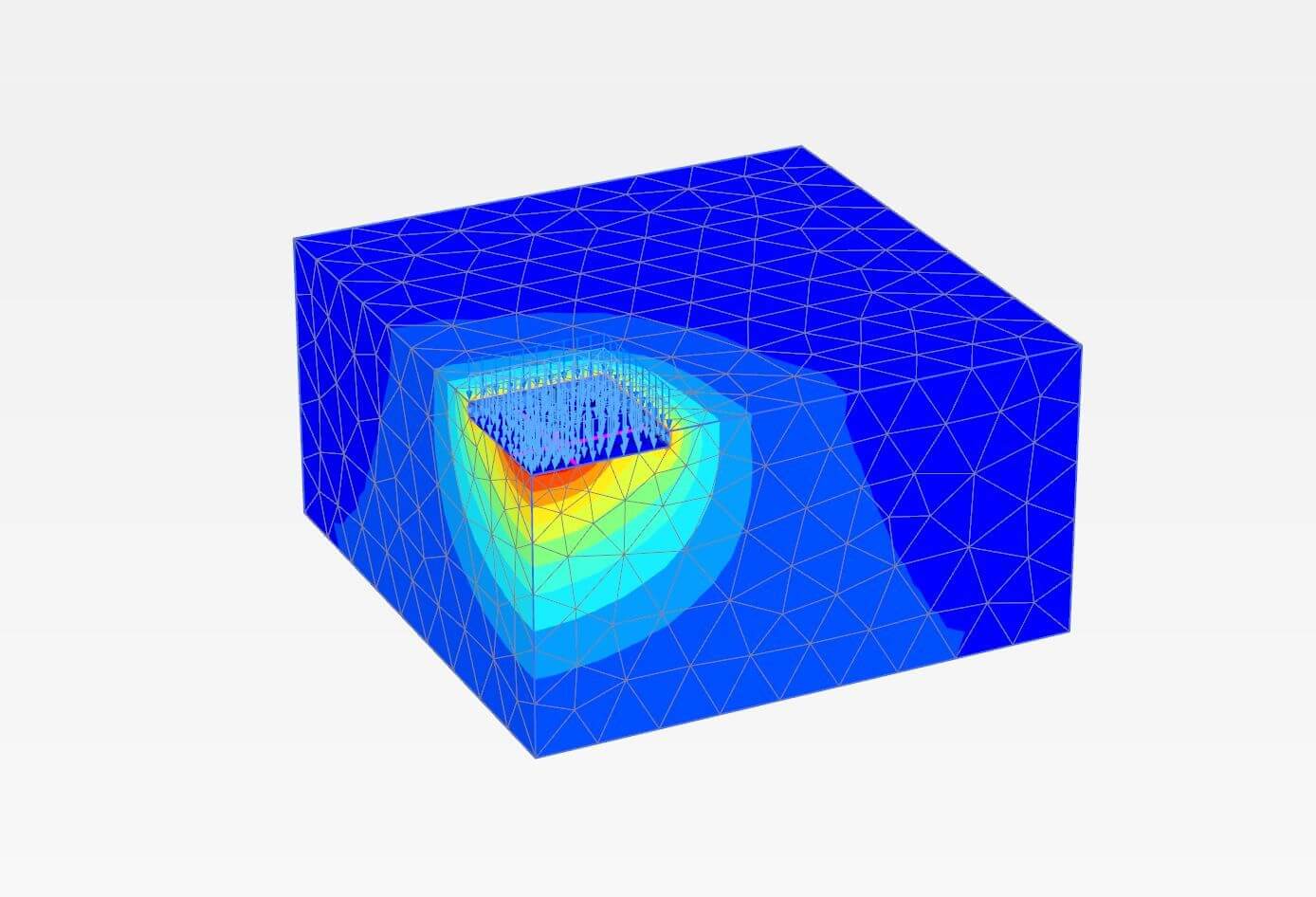
With a more accurate way of engaging input data (problem geometry, geology), a wider range of numerical analysis results is also available. When modeling an open pit protection with a pilot wall, a spatial insight into the distribution of internal forces in the piles is obtained. This enables us to optimize solutions in the sense of pile length, spacing, required reinforcement, etc. When conducting a settlement analysis, the settlement value within the entire spatial model is obtained. With better insight into the spatial distribution of settlements beneath the foundation, it is possible to determine differential settlements between all points of the foundation, not only in one section. It is also possible to determine the spatial distribution of the soil reaction module (kz), which is important data for the structural engineer sizing it.
Three-dimensional numerical analysis – example model
A deep foundation constructed using jet grouting columns is planned as part of the reconstruction of the T building within the industrial complex “Rikard Benčić” in Rijeka. The jet grouting columns are designed for transferring loads to deeper soil layers, as well as reducing the settlement of the foundation soil. The system selected for the preliminary analysis is a system of jet grouting columns of d = 700 mm in diameter, L = 12.0 m in length, on a global grid of 2.50×2.50 m below the base plate of the building. The geotechnical profile of the location and simplified numerical model are given in the figures below.
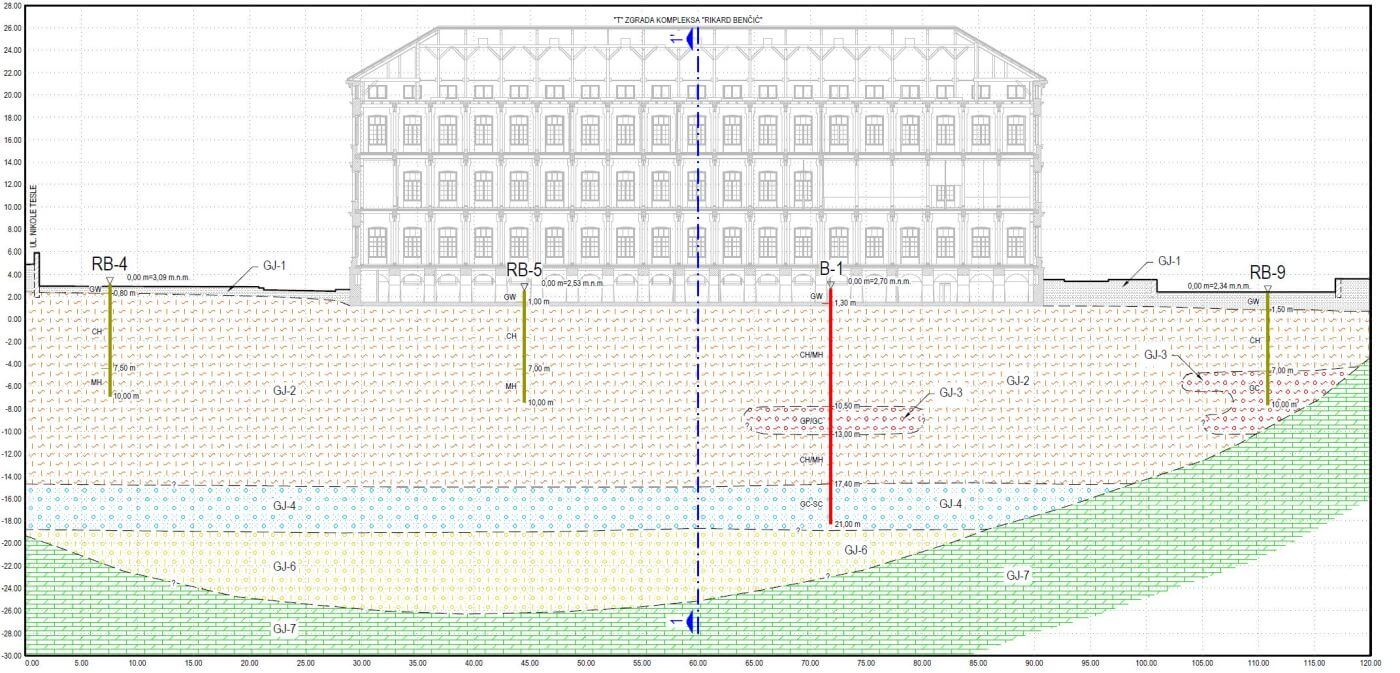
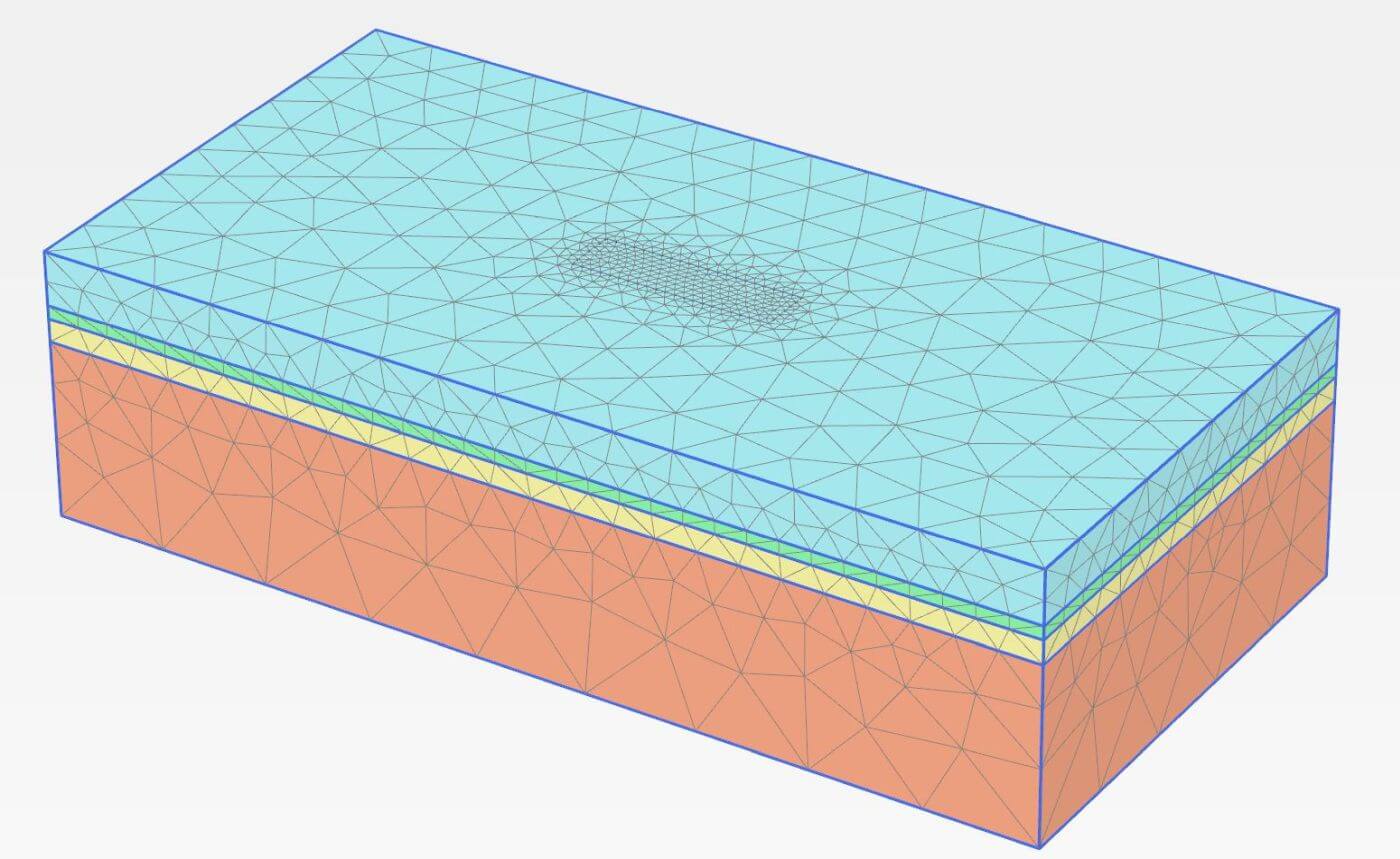
The interaction of soil and structure was studied across the base plate and the basement walls of the building.
The base plate of the building is modeled as a slab element d = 0.50 m thick, and the basement walls are also modeled as slab elements, d = 1.0 m thick. A drawing of these structural elements is shown below.
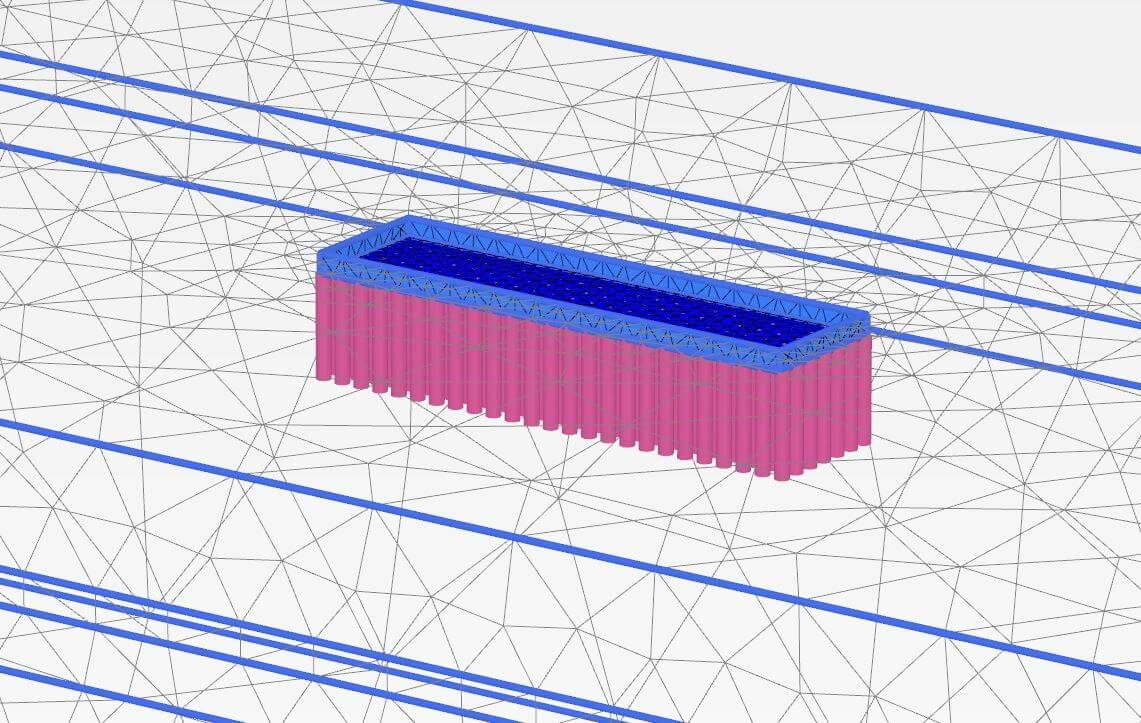
Within the reconstruction of the T building, the additional load on the building base plate was determined to be 50.0 kPa. This value was included in the model as the constant stress along with the plate element.
The deformations of the model, the base plate settlement, and the change of settlement depending on the studied cross-section are shown below.
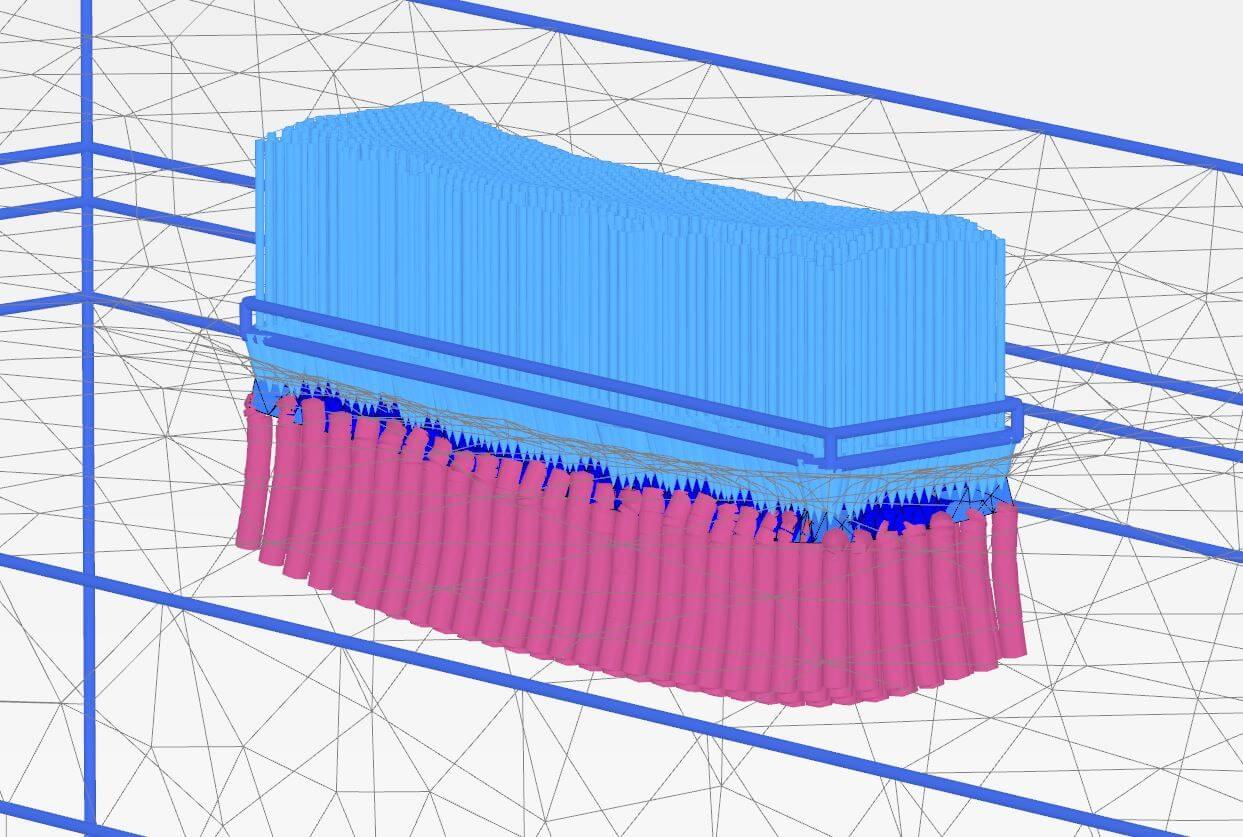
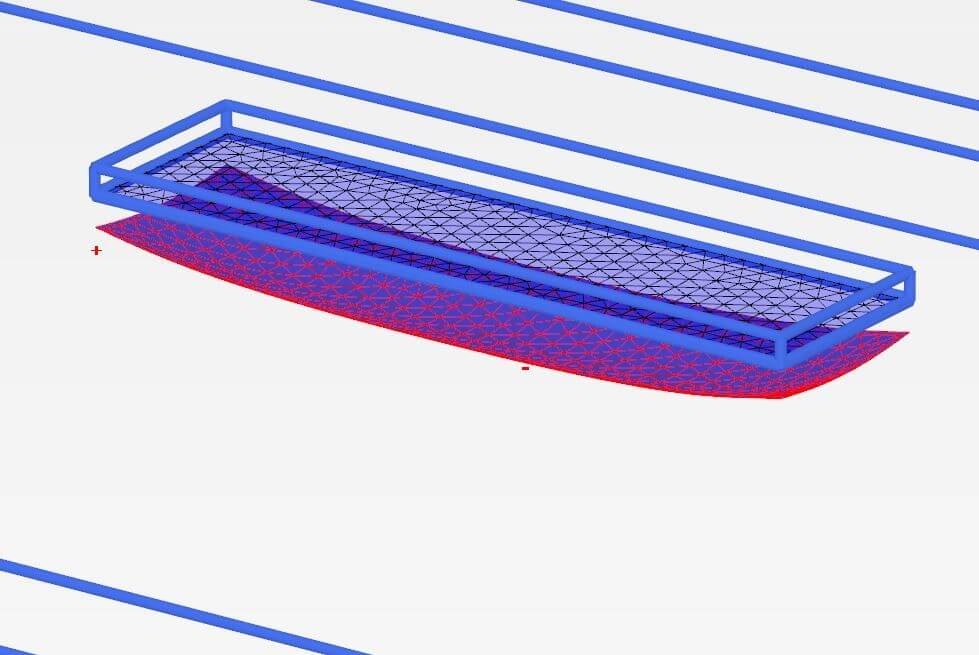
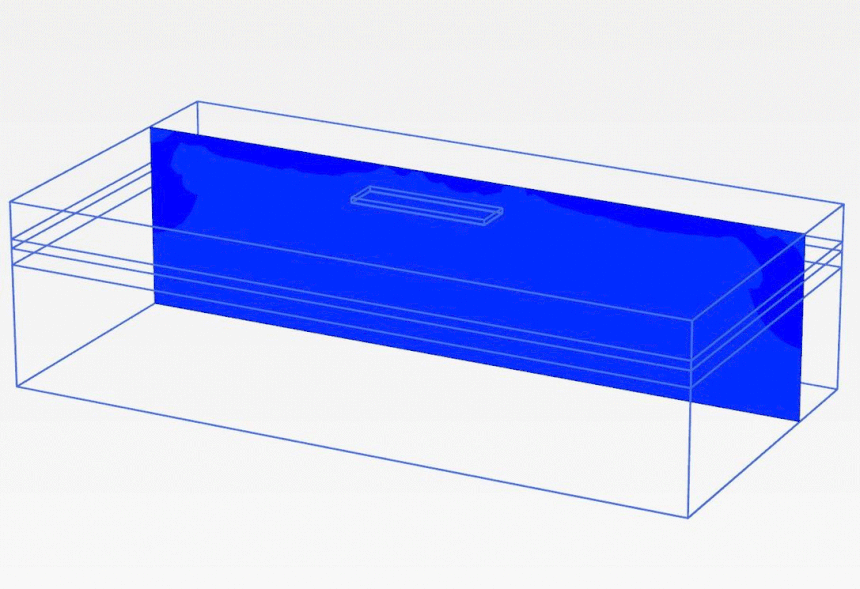
The results of the analysis have shown that:
- The current settlement of the base plate is 1.45 cm, which satisfies the condition of the settlement limit for statically indeterminate structures (5.0 cm).
- The maximum differential settlements of the base plate are 0.90 cm, which satisfies the limit value condition of differential settlements for the defined geometry and dimensions of the foundation structure (1.50 cm).
Plaxis 3D was selected to analyze the above example in order to gain insight into the spatial distribution of the current settlements below and around the foundations, as well as the differential settlements below the different parts of the base plate.
We will continue to master and apply the new Plaxis 3D in future projects.
Building a 3D calculation model may be more demanding and time-consuming compared to a 2D model, but given all the benefits that the software package brings, we believe it will enable us to further optimize future design solutions.
